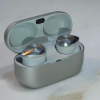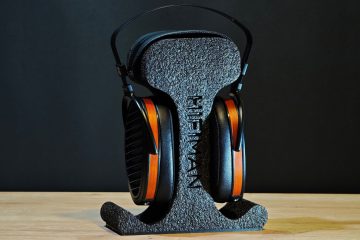Introdiction
The Denon PerL Pro is a very good and versatile but somewhat expensive tws. Strangely enough, just a few days ago the price was $350 and on the very day I’m writing this review the price has dropped to $279. I’m going to ignore this discount as I’ve already bought this tws for $350, but you don’t have to, you can go to Denon and take advantage of this discount.

Design & Build
It comes with a very simple box. The plastic used is of good quality and the tips are very good. The shells look round on the outside, fit well in the ear, are comfortable and provide an adequate seal. I think the design represents Denon well, the dimensions and quality of the case are good and the feel is smooth. If you think the shells are big, don’t worry, their size is normal.

Dimensions and Weights:
Earbud Weight: 8.6 g
Case Dimensions: 72.4 x 30.2 x 35 mm
Case Weight: 55.5 g

Technology
Denon PerL Pro stands out with its technologies. Its technology to reconstruct sound with personalized measurement is quite impressive. It is a disappointment that it does not have Ldac among its codecs. Although it uses aptX lossless, the latest aptX technology, ldac is still the most common codec.

ANC and Social Mode
ANC works very well and almost competes with the best companies on the market. It performs almost similar to airpods pro 2 in this regard. The ambient mode, called Social mode, is great, allowing you to hear even the slightest sound with the microphones it contains. In the sounds I made, I could easily hear even the slightest whisper from a distance of 1 meter when there were people outside. You won’t hear any extra noise when Social mode is on. The outside sound is not too loud and not too low, just right. So Social mode works great.

Masimo Adaptive Acoustic Technology (AAT)
This ultra-cool technology measures the frequencies it sends into your ear, determines which frequencies you are sensitive to and creates a new sound profile accordingly. It is very important to do this test in a quiet environment, I got full results on the 3rd test and I found it quite successful. I think it accurately determines which frequencies I hear and how much I hear because I liked the sound profile it produced for me. The default version felt like a raw meal and with this test it felt cooked. I had three other people do this test besides me, two of them liked the result with me and one of them found the default sound better. If we say three against one, we can accept that this technology is successful.

Connection & Codecs
It connects very fast with Bluetooth 5.3 and aptX lossless. In my tests, I was able to get stable sound at a distance of 10 meters with 3 walls in between.
AptX lossless audio technology offers a bit rate of around 1mbps at CD quality. At this point it is very similar to ldac, even slightly better. However, it is a very new technology and not very common. So the missing ldac is a con. For more information on aptX lossless audio technology, you can visit qualcomm. (By the way, Denon PerL Pro is the first in the world to use this codec)
Battery Life
According to Denon, the PerL Pro provides 8 hours of battery life at 50% volume and 24 hours total with the box. It also has fast-charging technology that allows 1 hour of listening with 5 minutes of charging when the battery is empty. To be honest, I couldn’t even finish the battery during my long listening sessions, so PerL Pro gets a passing grade for battery life.

App
It has a very simple application. ANC and Social Mode (ambient mode) are not adjustable, you can just turn them on and off. There’s not much except a simple eq and ATT, but it works quite well and I would say it’s enough.
The Denon PerL Pro has a spatial audio option that perfects soundstaging. This option can be toggled on and off via the app. I’ll talk about this in the sound section.

Call Quality
I’d say it’s exactly average. Not bad in a noisy atmosphere, very good when there is no noise. It blocks outside noise but transmits a little background noise to the other side. It will easily do the job in daily use.

Sound
I’m going to base this part on the sound from the last ATT test, of course I also listened to the default version, but remember that the purpose of this technology is to make a certain sound the same for everyone. I think the different sound profiles are not to make us hear different sounds, but to redefine the sound by measuring our sensitivity to frequencies so that we hear the same “Denon” sound.
It has a natural, slightly warm and almost U-shaped sound. As expected from Denon, there is a very consistent tonality. But what really deserves praise is the spatial sound by Dirac Virtuo. This option was always on throughout the review because there was not a single reason for me to turn it off. The soundstage with this spatial sound is unbelievable, reminiscent of the soundstage of a high-end piece of equipment, independent of the rest of the sound.
In terms of technical quality, we get a slightly above average performance. Of course Denon, as an audio specialist, easily outperforms many other brands. But when we broaden our perspective, there are a lot of “audio specialists”. So I would say slightly above average for resolution and detail reproduction, which is true given the $350 price tag. In the areas of instrument feel, layering, separation and fidelity, the PerL Pro performs great.

Denon PerL Pro ($349) vs Technics EAH-AZ80 ($300)
In terms of sound, Technics EAH-AZ80 has higher resolution and a better stage. Details and separation are close, but AZ80 is slightly better. The PerL Pro offers slightly better low frequency response. Both are close and good tonally, with the Denon PerL Pro being flatter. PerL Pro has a better soundstage than AZ80. Noise cancelling is better with the PerL Pro (Adaptive NC always on) and PerL’s ambient mode quite better than AZ80.
PerL Pro is superior when it comes to Technology. Because it has Adaptive Acoustic Technology that generates a customized sound profile and measures for it. This technology measures your sensitivity to frequencies and reconstructs the sound. App support is better on the EAH-AZ80, while PerL Pro has better microphones. PerL Pro does not have LDAC, while Technics AZ80 does. PerL Pro offers longer battery life.
Last Words
The Denon PerL Pro is a top of the line tws that has proven itself in all aspects. The only problem is the $350 price tag. Fortunately, it’s now $279. I don’t want to sound like I’m advertising, I have nothing to gain from it. But it is obvious that $279 is a much better offer than $350.











